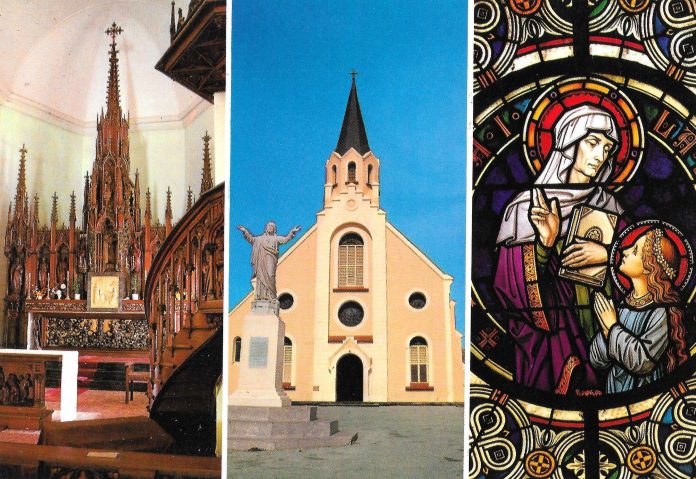UncoverAruba’s insights through Etnia Nativa
Destination values, native heritage, and cultural identity are what Etnia Nativa advocates for as its own particular way of safeguarding all reasons to love Aruba. Through this cultural blog, “Island-Insight,” we share awareness, educate, and safeguard native heritage. It is how we encourage you to experiment with an island-keeper state of mind during your stay.
During this episode, we want to encourage you to discover a gothic work of art that you can admire in the Saint Anne Church located in the Noord district.
The high altar of St Anne’s Church in Noord is an extraordinary handiwork of Gothic Revival (aka: Victorian Gothic, Gothic Revival). An architectural movement that began in the late 1840s in England gained momentum in the first half of the 19th century and expanded as increasingly serious and erudite admirers of Gothic Revival styles sought the best craftsmen to revive medieval Gothic architecture, with the intent to complement or even replace the prevailing neoclassical styles at the time.
The main altar of the Santa Ana church in Noord, which dates back to 1870, is a magnificent example of this style. Together with the communion rail and the pulpit, they make up an extraordinary work of art, carved from oak, and are the work of the Brabant sculptor Hendrik van der Geld.
Hendrik van der Geld (Elshout, 1838; Den Bosch, 1914) was a sculptor who studied at the Den Bosch and Antwerp art academies. Between 1870 and around 1910, he worked on the restoration of St. Jan in Den Bosch, for which he produced different altars, pulpits, a portal sculpture, and various statues of saints. His other works were often commissioned by the Bossche diocese. In Tilburg, Van der Geld made statues of saints and Stations of the Cross for the old Korvel church and statues of saints for the Maria “kerk”. Between 1878 and 1885, he made four statues of saints for the Heikese church. In 1881, he created the main altar in the Heuvelse Kerk and also made seven altars for the cathedral church of Bois le Duc, some hundred statues and different works of art from which have been preserved to this day.
The main altar of the church of Santa Ana was awarded at the sacred art exhibition held in Rome in 1870 during the First Vatican Council convened by Pope Pius IX and was located in the church of Scheveningen (near The Hague, in the Netherlands) due to the majesty of its style and design.
At the beginning of 1900, when the church in Scheveningen was renovated, the main altar, the communion rail, and the pulpit were donated to the mission in the Netherlands Antilles. Its initial destination was Willemstad in Curacao, but when the ship that was bringing the altar arrived in Aruba, they got the bad news that at this time they were going through some difficult days in Curacao since there were many people sick with diphtheria, so they decided to leave this magnifique work of gothic art in Aruba, reaching its destination in the Saint Anna Church of Noord.
Now, in addition to the main altar, there is something else that also captures the attention when visiting the Santa Ana church, which are the stained glass windows, the work of the German artist Wilhem Derix de Kevelaar, dating from 1932, while those of the semicircular windows were made by Heinrich Derix (the son of the first) in 1965 and represent the four Alto Vista –Noord district- prosecutors (episode 136, “Alto Vista history”) and were cast by Johan B. Schmeitz.
Leaving the church, you can see the priest’s house on the right, built in 1877, one of the oldest houses on the island that is still in use.
Intrigued by Aruba`s origins and its cultural heritage? Do something outside of the tourist grid. Become one of the exclusive visitors of Etnia Nativa, a private residential encounter set up where you will be able to touch and be touched by authentic Aruba heritage, a spectacle of native art, archaic as well as archaeological artifacts, lithic tools, colonial furniture, and other items of the island’s bygone era. Get inside a recycled environment full of peace, relaxation, knowledge, and information.
Etnia Nativa is, since 1994, the home of Anthony, our acclaimed columnist, artist craftsman, and island Piache, who guides and lectures you through his resplendent private collection. This native museum/home is the only place that recreates and introduces you to an authentic glimpse into Aruba’s cultural heritage. Something completely different for a change—a contemporary Native Aruba experience!
Appointment is required + 297 592 2702 or etnianativa03@gmail.com

















